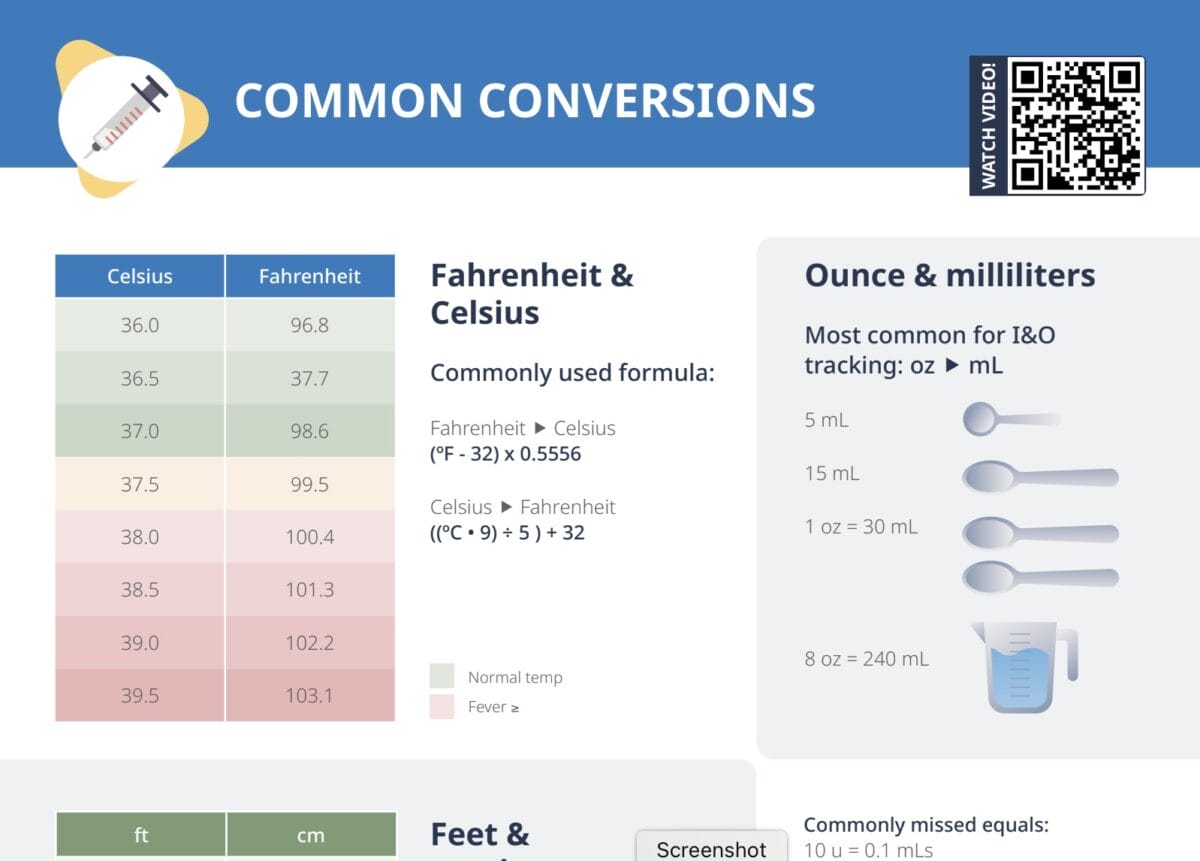Converting Celsius to Fahrenheit (°C→°F)
Table: Common temperatures
| Celsius | Fahrenheit |
| 36.0 | 96.8 |
| 36.5 | 97.7 |
| 37.0 | 98.6 |
| 37.5 | 99.5 |
| 38.0 | 100.4 |
| 38.5 | 101.3 |
| 39.0 | 102.2 |
| 39.5 | 103.1 |
Formula: (°C • 9) ÷ 5) + 32 = °F
Converting Fahrenheit to Celsius (°F → °C)
Formula: (°F – 32) x 0.5556 = °C
Converting Feet to Centimeters (ft → cm)
Table: Common heights
| ft | cm |
| 5′ | 152.4 |
| 5’2” | 157.5 |
| 5’6” | 167.7 |
| 5’10” | 177.8 |
| 6′ | 182.9 |
| 6’4” | 193.0 |
Formula: ft • 30.48 = cm
Converting Centimeters to Feet (cm → ft)
Formula: cm ÷ 30.48 = ft
Converting pounds to kilograms (lbs → kg)
Formula: lbs ÷ 2.205 = kg
Converting kilograms to pounds (kg → lbs)
Table: Weight conversions overview
| 1 kg | 2.2 lbs |
| 1 kg | 1,000 g |
| 1 g | 1,000 mg |
Formula: ks • 2.205 = lbs
Converting ounces to milliliters (oz → mL)
Formula: oz • 29.574 = mL
Tips
- Most common for I&O tracking is oz → mL.
- 8 oz is about 240 mL.
- Commonly missed equals:
- 10 u = 0.1 mL
- 1 mL = 1 cc
- TB syringes: 0.1 & 0.01 mL measurement → total 1 mL syringe
- Standard/commonly used syringes: 0.1 mL → 5 mL, 10 mL
Converting milliliters to ounces (mL → oz)
Formula: mL ÷ 29.574 = oz

